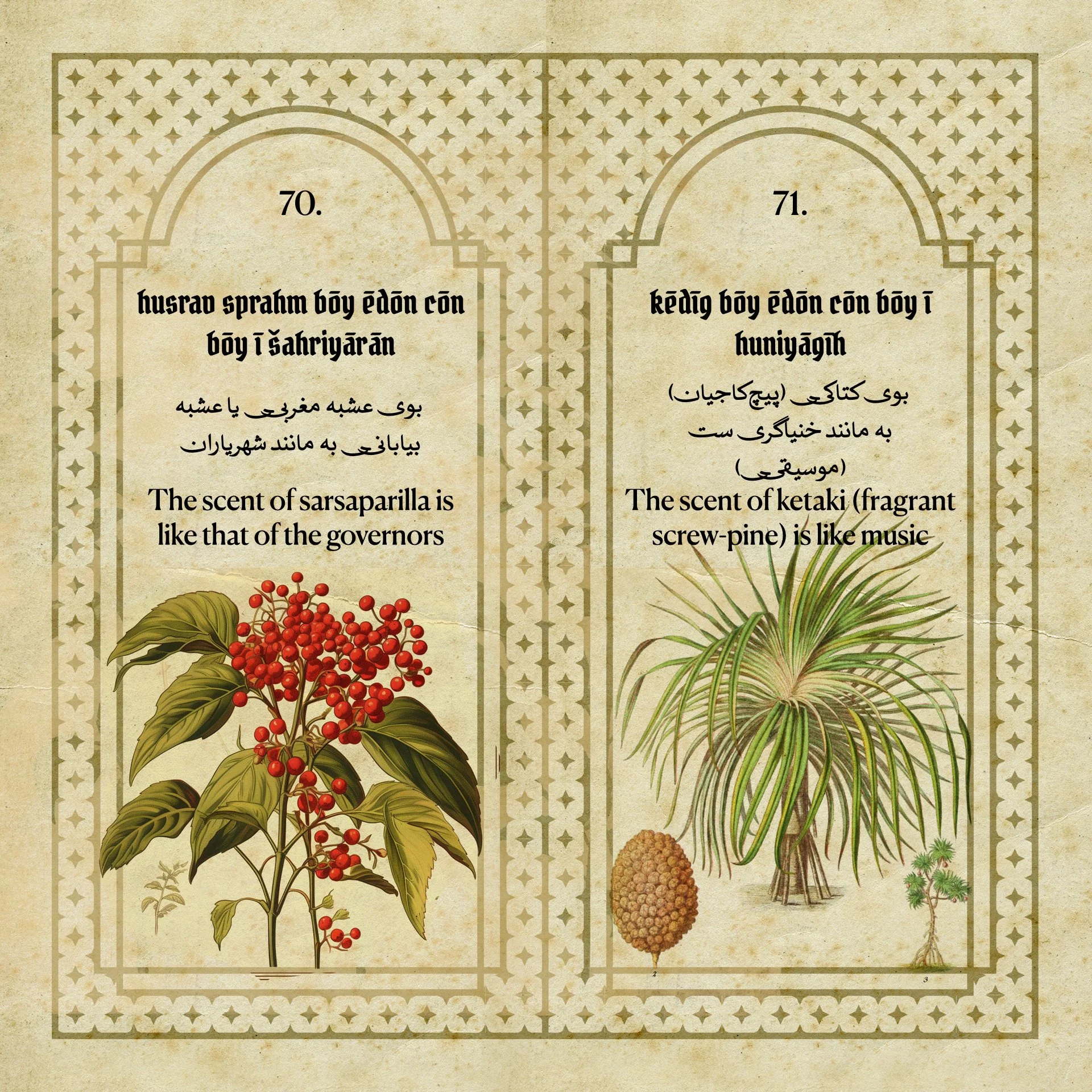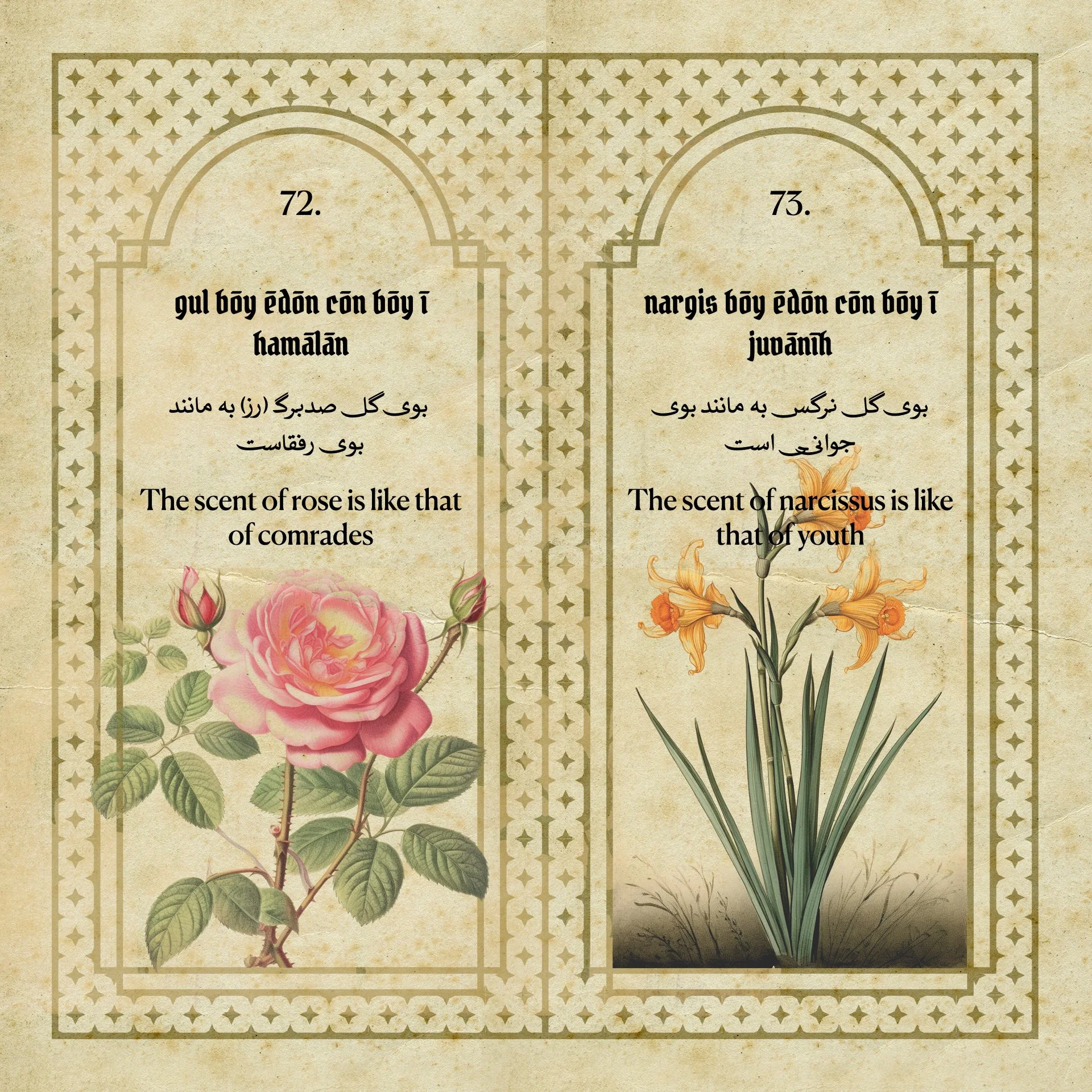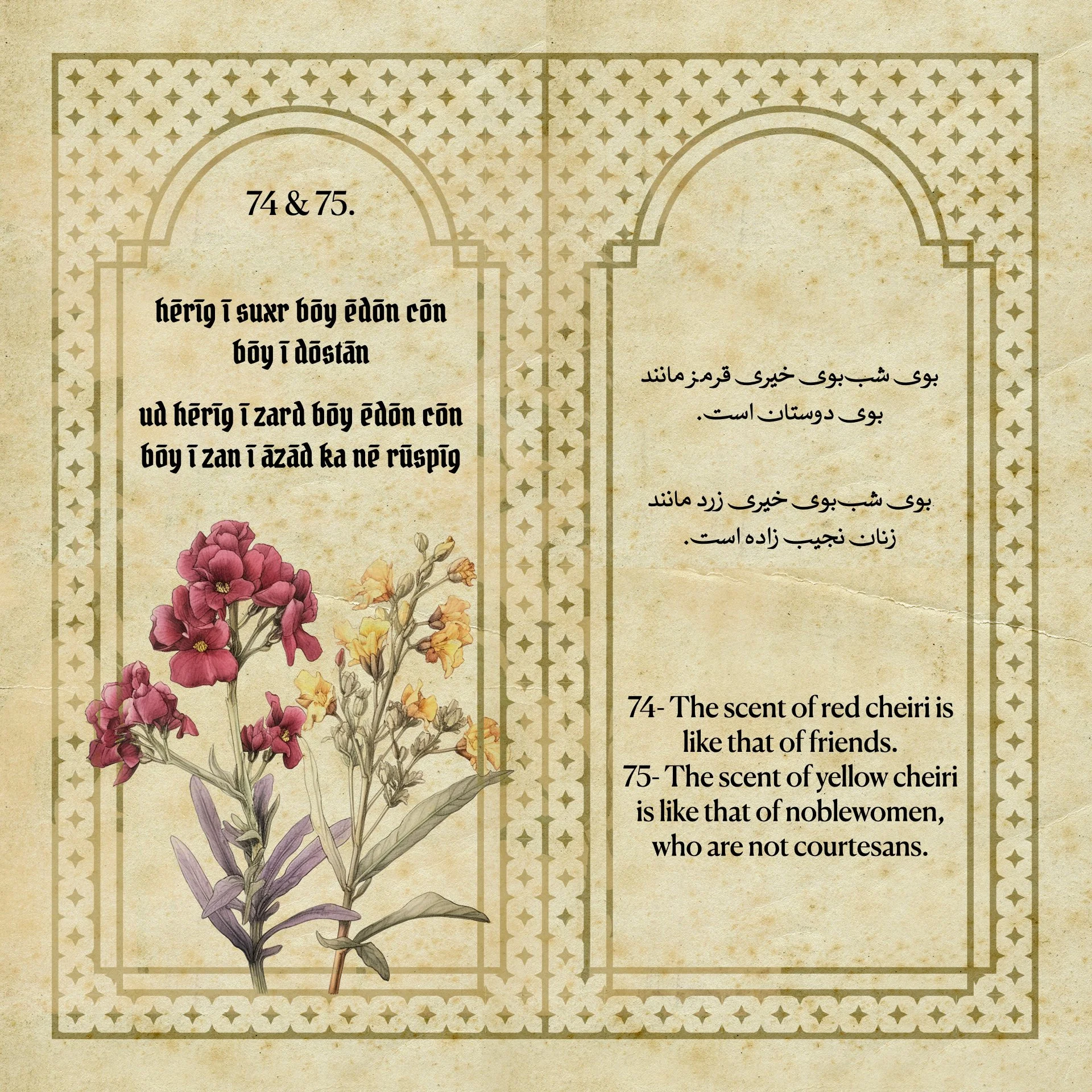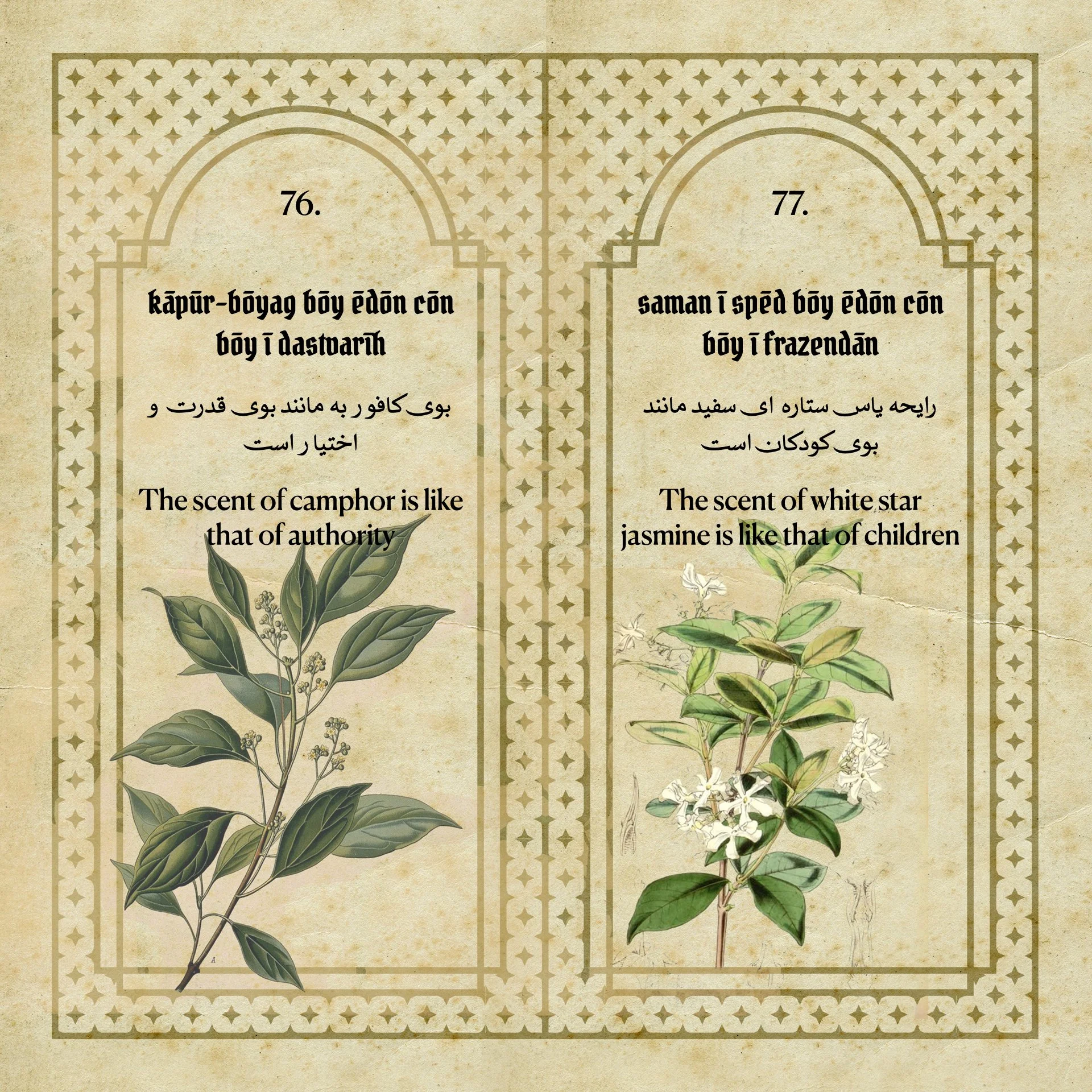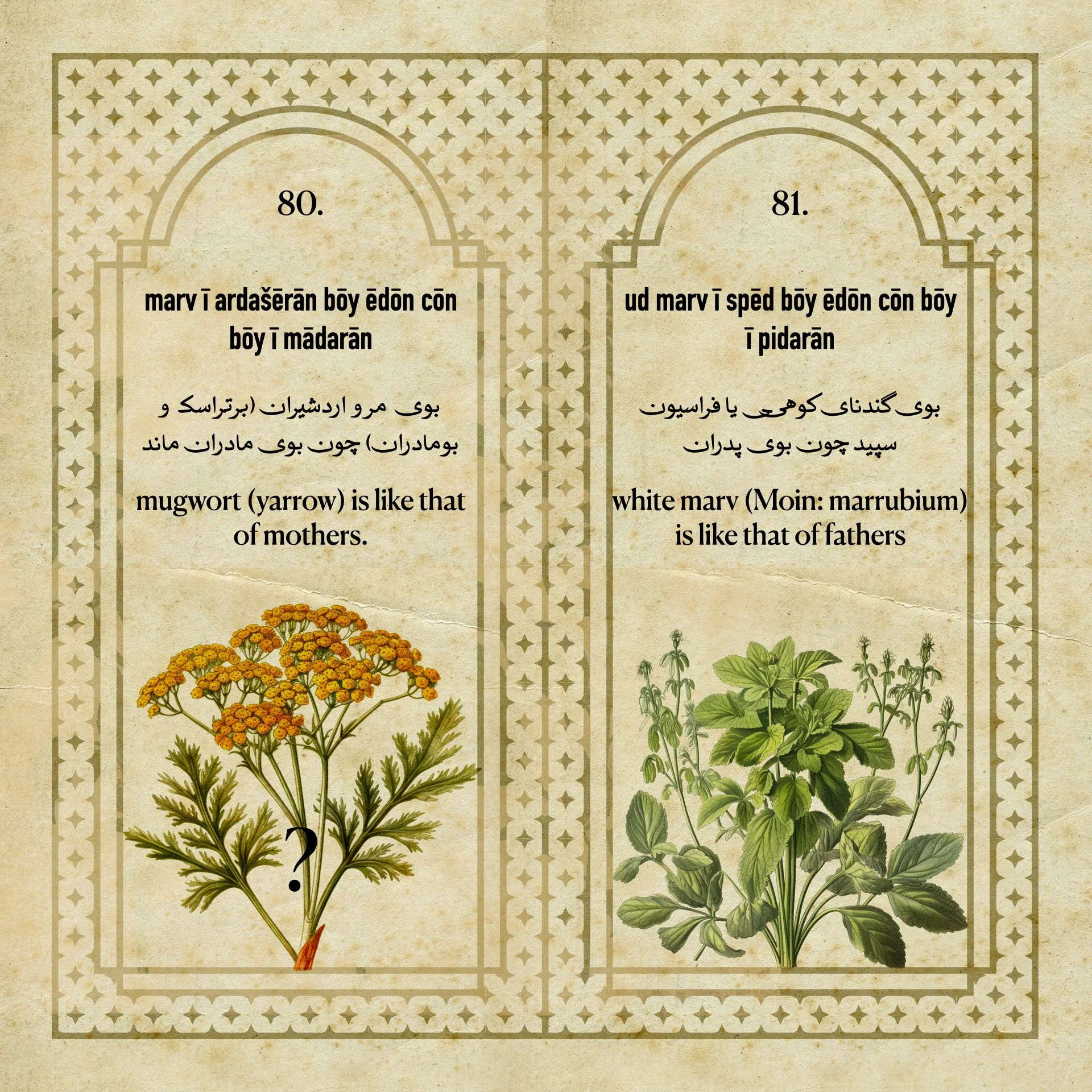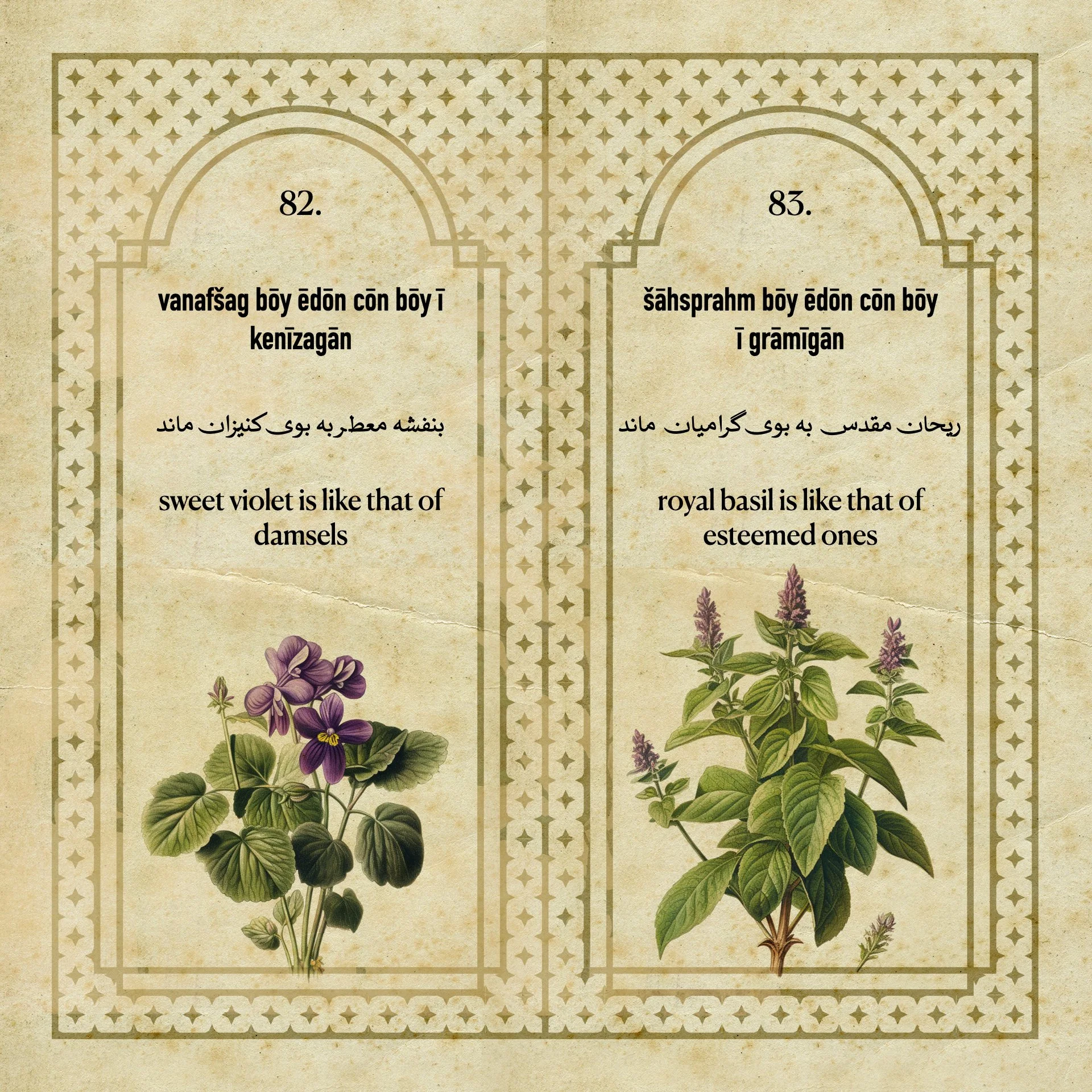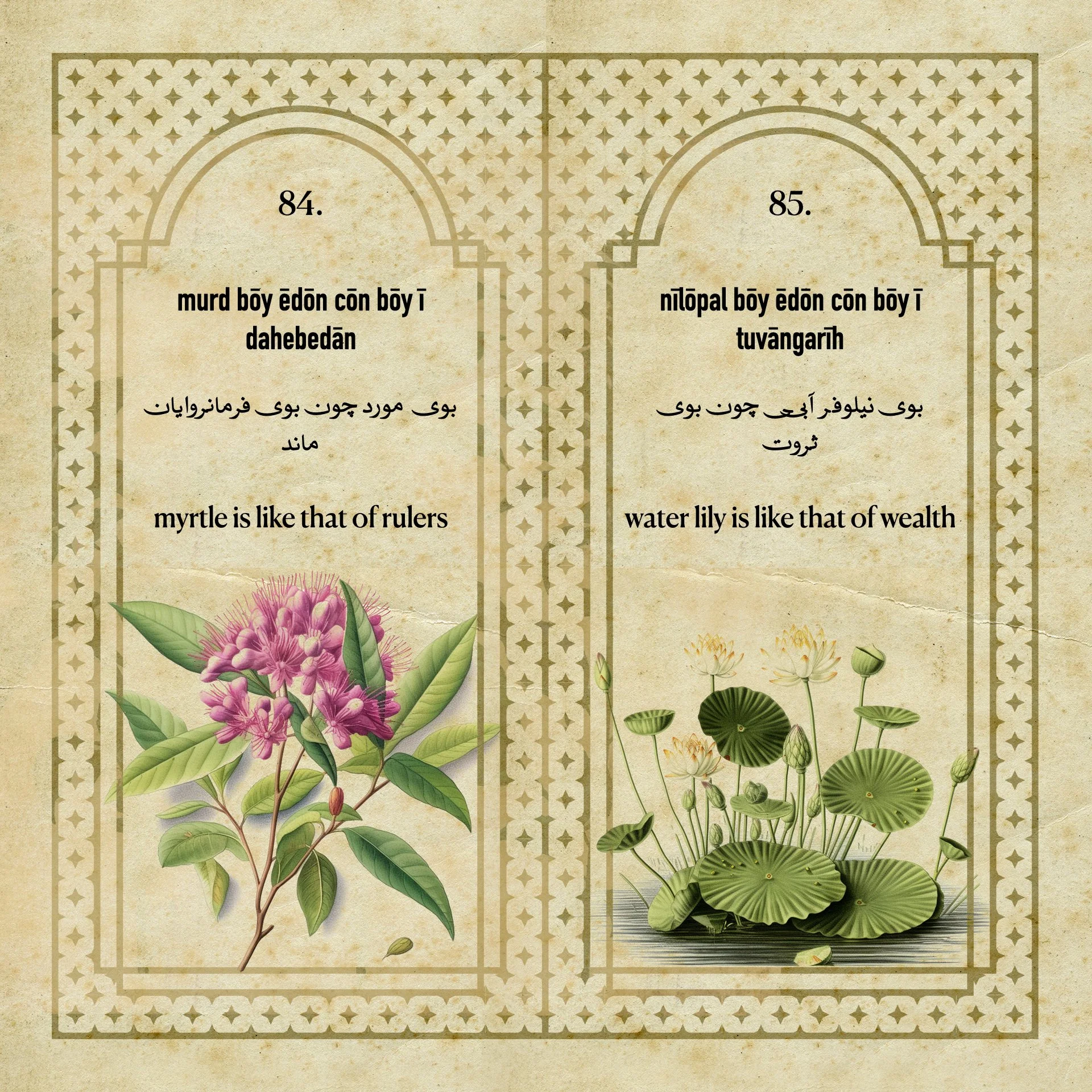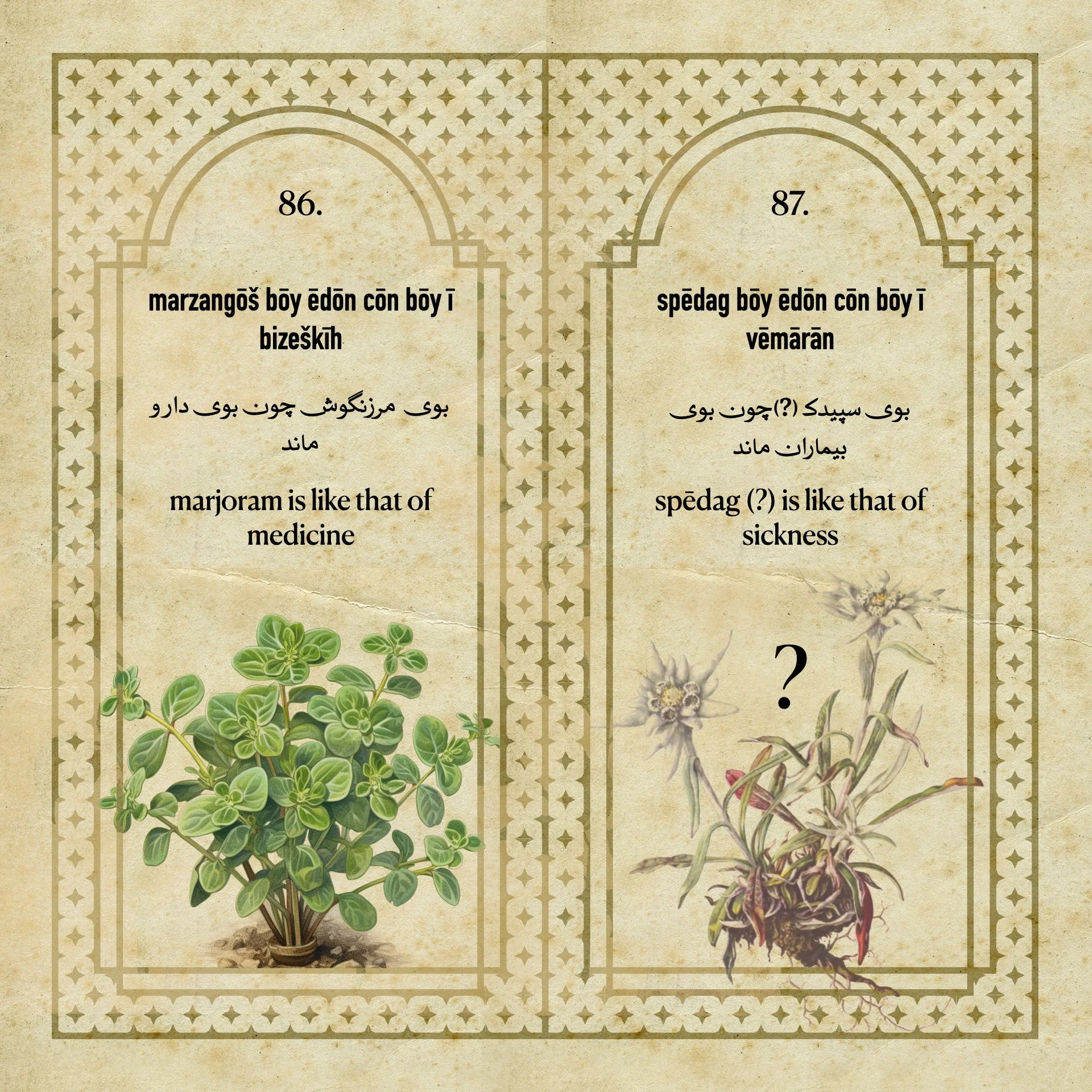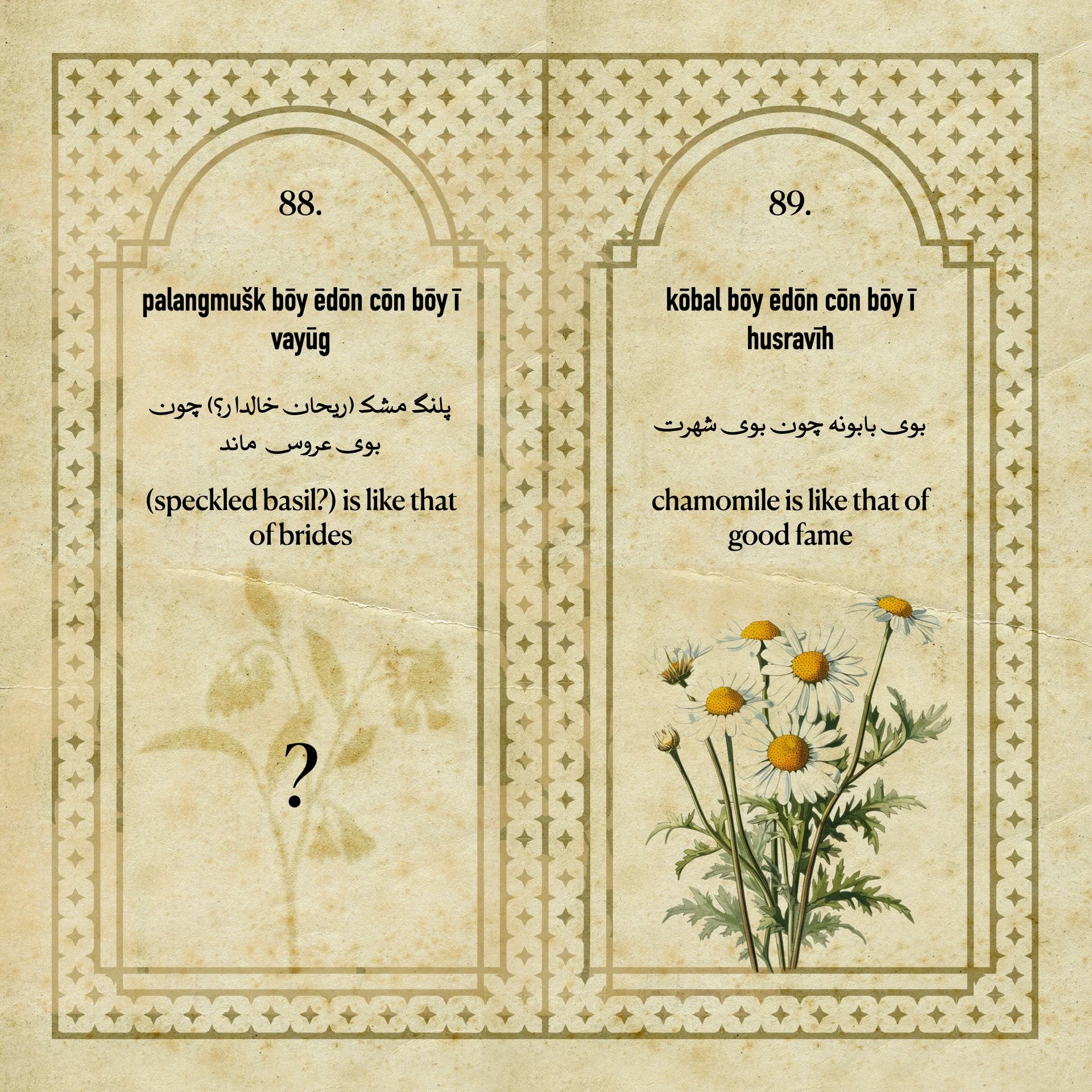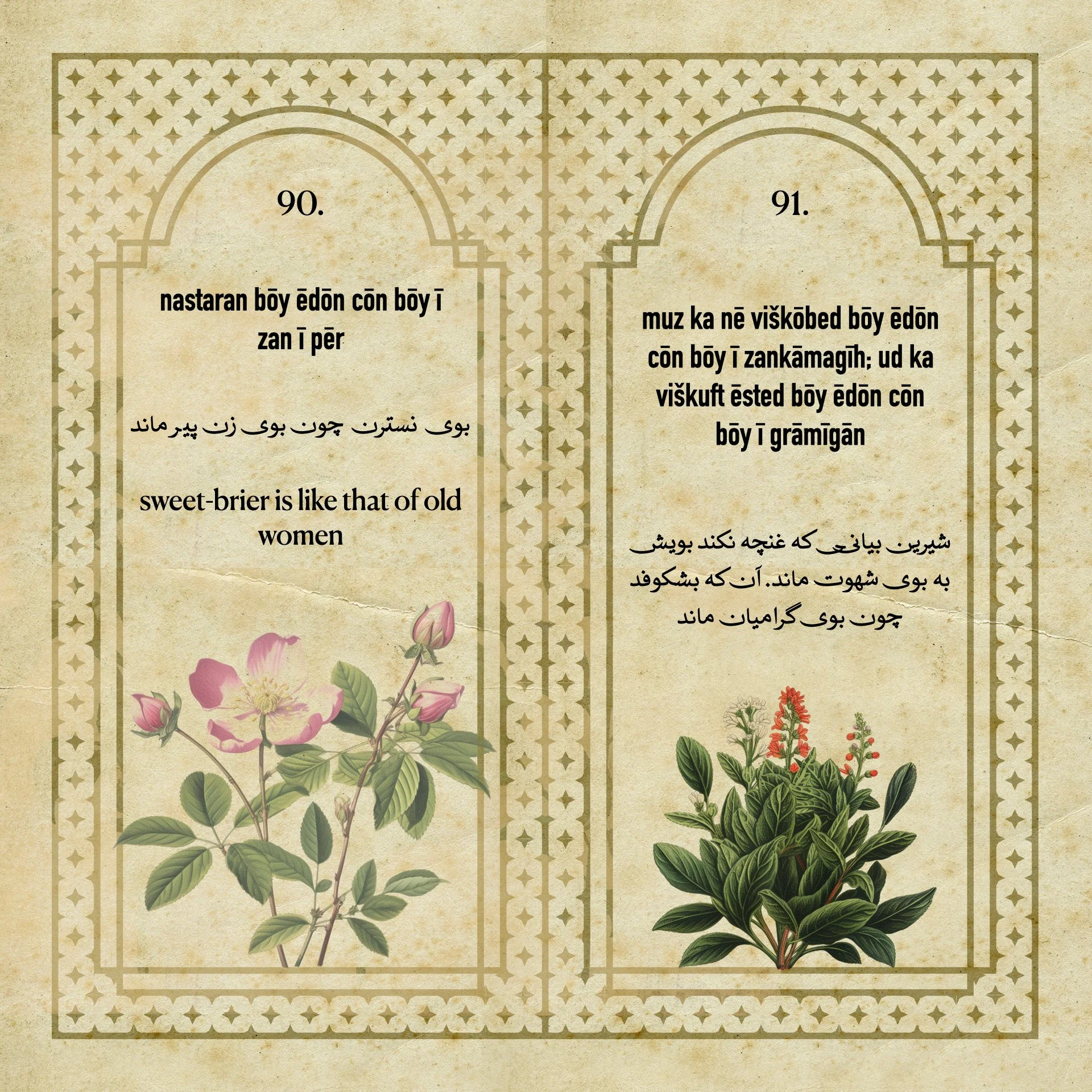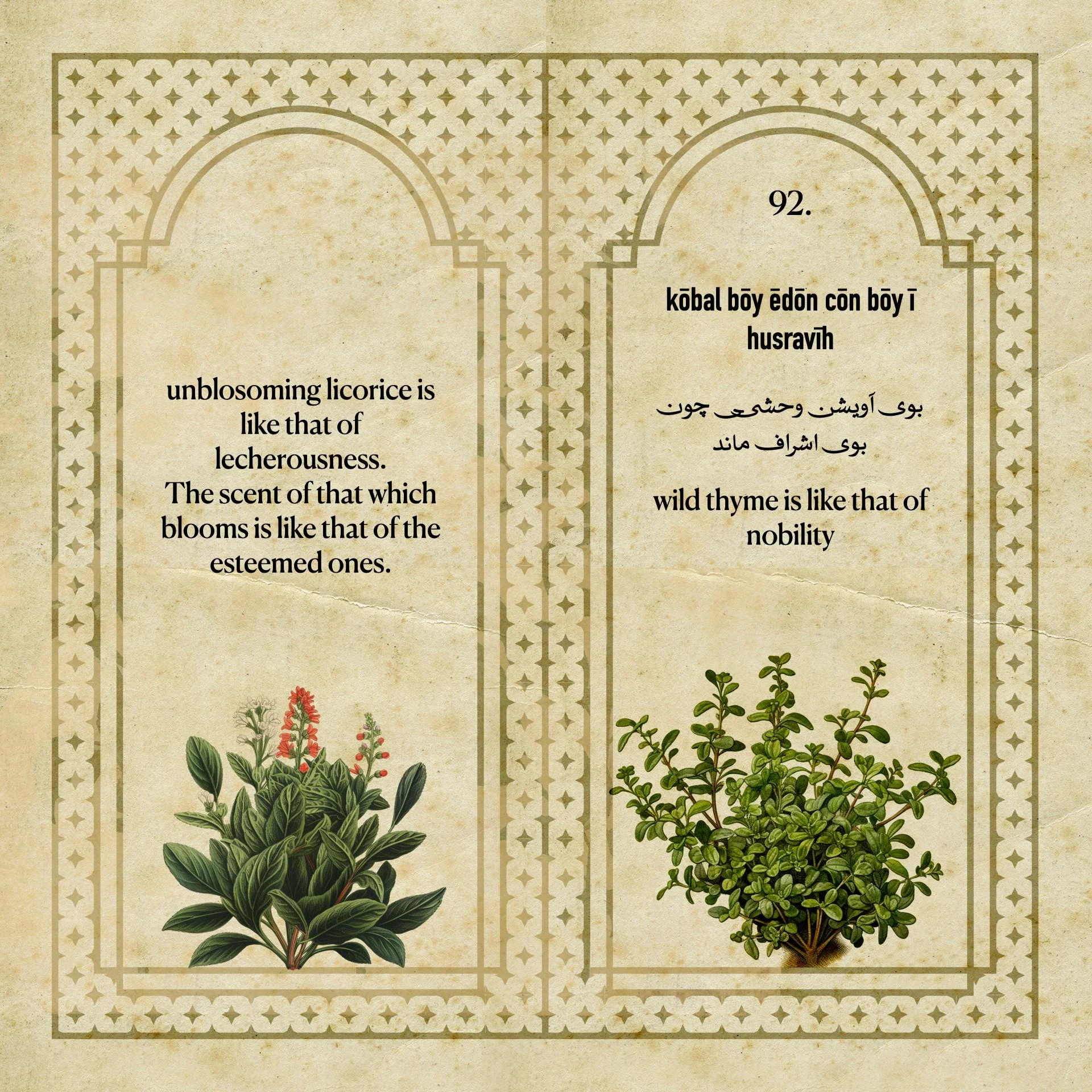Captivating Scents of the Old World: Explore Sasanain Persian Fragrances
Captivating Scents of the Old World: Explore Sasanain Persian Fragrances
Context
Khosrow and Ridak, also known as Khosrow and ‘the Page’, is a piece of Middle Persian literature written in Pahlavi script that provides insight into Iranian culture in late antiquity. The king in question could be Khosrow I (531 – 579) or Khosrow II(590 - 628). The tale revolves around a young man named Ridak (likely a title, referring to a servant or young boy who serves the nobility), who appears before the king to request a position. The king asks him 13 questions. It is Ridak’s responses that make up the body of this text.
The King’s 11th question is about fragrant and “sweet-smelling flowers”. The response the boy gives not only informs us about what fragrances they were familiar with and used during the Sasanian era Persia (3rd-7th century) but also his ability to compare each flower to social concepts, be it a class of society, or a profession gives us a deeper understanding of the uses of the fragrances.
The emergence and translation of the middle Persian text “Khosrow & the Page” (Perhaps from the 7th century) have given us an unprecedented preview into the sophisticated sense of olfactory among noble Iranians in Late antiquity.
Named Fragrances and Their Descriptions
Further Resources
-
Lecture: The Perfumed Garden of Iran
Watch professor Touraj Daryaee talk about Iranian olfactory in an open lecture at the University of Maryland

-
The Full text of the Manuscript
Husrō Son of Kavād and a Page (HKR) | husrav ī kavādān ud rēdak-ē
Read the full text in Parsig (Middle Persian) from the Erman website.

-
Experience These Smells for Yourself
Here is an Amazon list of some (Not all could be found of amazon) of the fragrances mostly in the form of essential oils you can purchase and experience for your self




